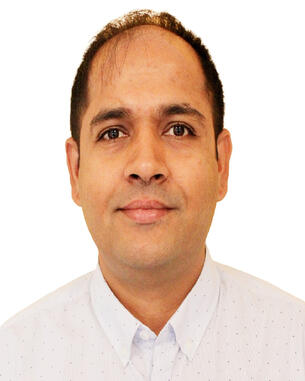 Tittelen på avhandlingen er: «Modelling and simulations of bubbling fluidized bed and entrained flow biomass gasification reactors.»
Tittelen på avhandlingen er: «Modelling and simulations of bubbling fluidized bed and entrained flow biomass gasification reactors.»
- Her finner du hele avhandlingen (openarchive.usn.no)
Summary
Climate change is the defining challenge of our time. New reports from the International Energy Agency (IEA, 2021)1 have developed a roadmap for max 1.5-degree global warming and net zero emissions by 2050 from the energy sector. The roadmap recommends increasing efforts and a clear political action to invest
in renewable energy extensively and immediately.
Biomass, a renewable energy resource can potentially be used to produce a standard gaseous mixture of carbon monoxide, methane, hydrogen, and carbon dioxide via biomass gasification. Syngas (a mixture of CO and H₂) can be used as a primary feedstock for a different number of chemical synthesis processes. The syngas can be burned directly in gas engines, boilers, furnaces, and stoves, or further converted into synthetic liquid fuel via the Fisher-Tropsch synthesis.
The research was based on the experimental and computational study of the biomass gasification process. Experimental studies were performed at a bubbling fluidized bed gasification reactor. A computational model based on Multi-Phase Particle-In-Cell (MP-PIC) approach was developed for the same reactor, as well as for an entrained flow gasification reactor. The models were validated against the experimental results. The validated models can be used to facilitate the commercialization of these biomass gasification technologies. The developed models will play a crucial role in upscaling biomass gasifiers from laboratory/pilot- to full-scale plants in the future. These models based on MP-PIC modelling have been widely used for optimization and parametric studies for different types of reactors. Overall, the models gave an acceptable performance as compared to experimental results.
Experiments were performed with wood chips, wood pellets, and grass pellets in a pilot-scale bubbling fluidized bed gasifier at different airflow rates and biomass feed rates. The product gas compositions and the gasifier performance were measured and analyzed. Increasing the equivalence ratio (ER) gave an increased gas yield per kilogram of biomass, however, the lower heating value (LHV) of the product gas decreased due to the dilution of the product gas with N₂. Gasification of grass pellets was challenging due to the formation of agglomerates and gave a low carbon conversion. Wood chips showed reasonable results at a temperature of around 850°C with a carbon conversion of around 60%.
The results from the developed CFD models are of practical importance for the commercialization of bubbling fluidized and entrained flow biomass gasification reactors.
The work was carried out at the University of South-Eastern Norway, Campus Porsgrunn, Norway, as a part of the FME Bio4Fuel project.
1 https://www.iea.org/reports/net-zero-by-2050
